|
|
|
Sort Order |
|
|
|
Items / Page
|
|
|
|
|
|
|
| Srl | Item |
| 1 |
ID:
190010


|
|
|
|
|
| Summary/Abstract |
Although Lord Plumer’s tenure as high commissioner for Palestine (1925–28) is sometimes characterized by mainstream Euro-American histories as a period of comparative peace, the year 1927 saw two major disruptions: the Jericho earthquake in July, which caused serious damage to towns and cities including Jerusalem, Nablus, and Lydda; and unrest among Jewish immigrants who found that the local economy had no jobs to offer them—or at least not ones at the European rates of pay to which they were accustomed. This article explores the ways in which each of these crises intersected with Palestine’s infrastructure—in particular its railways, roads, and housing stock. I argue that the disparate ways in which the British administration approached earthquake victims versus the unemployed, the help it offered (or failed to offer), and the policies it implemented are telling about the nature of British governance in Palestine in the mid-1920s and British administrative priorities and concerns. The Mandate authorities’ responses to the quake—characterized by selective negligence—reveal the colonial administration’s weakness, the contested ways in which colonial structures were shaped and operated in the early Mandate period, and the extent to which maintaining a facade before other colonial powers and the League of Nations outweighed substantive action.
|
|
|
|
|
|
|
|
|
|
|
|
|
|
|
|
| 2 |
ID:
123068


|
|
|
|
|
| Publication |
2013.
|
| Summary/Abstract |
Long known as innovative in modernist architecture, mid century Ahmedabad was also pioneering in another area of built form: housing. Starting in the 1920s when Indians seized control of urban politics, Ahmedabadis launched a number of bold new initiatives to improve housing in the city, involving a striking range of actors-labour activists, middle-class reformers, mill owners, and municipal leaders. Largely ignored under earlier British leadership, housing became a key way for Ahmedabadis to lay claim to a new, more inclusive vision of the city. Although housing continued to play a prominent role in politics after Independence, the 1950s actually marked a retreat from that earlier inclusive vision, ultimately enshrining the class and community segregation that marks Ahmedabad today.
|
|
|
|
|
|
|
|
|
|
|
|
|
|
|
|
| 3 |
ID:
167000
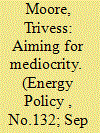

|
|
|
|
|
| Summary/Abstract |
Concerns about climate change, energy security and energy productivity are driving countries to improve energy and thermal efficiency of their housing. Australia established a Nationwide House Energy Rating Scheme (NatHERS) in the mid-1990s to encourage improved energy performance, before regulating minimum energy standards in the 2000s. While minimum standards in Australia have improved, they fall short of requirements for a low carbon future. Resistance to new standards has been predicated on the argument that consumers will drive the market. Others argue that market failures result in lower than optimal house energy performance. There has been limited investigation of this in the Australian context. This paper analyses over 187,000 NatHERS certificates from 2016 to 2018 to determine the response to market desires and the regulatory environment. The research finds 81.7% of housing is designed only to meet minimum standards, and 98.5% falls below the economic and environmental optimum. This demonstrates significant market failure and indicates that building energy regulation is a powerful instrument for delivering improved performance outcomes. If governments are seeking a larger contribution from the housing sector to carbon abatement and other energy policies, systematically raising minimum building energy regulations is probably the most important and effective mechanism.
|
|
|
|
|
|
|
|
|
|
|
|
|
|
|
|
| 4 |
ID:
136246


|
|
|
|
|
| Summary/Abstract |
The UK׳s housing stock generates approximately 27% of the country׳s total annual carbon emissions. In light of the legally binding targets to reduce carbon emissions, new housing is subject to a tightening of regulations governing energy demand and efficiency resulting in a gradual improvement in carbon emissions. The question is how to achieve the deep carbon emission reductions from existing domestic properties, of which 75% will still be in use in 2050. Government has sought to provide incentives to homeowners to improve the energy efficiency of their households, and mandate improvements in socially rented housing using a range of fiscal measures, most recently the ‘Green Deal’. There has however been little consideration of the 18% of UK households who privately rent their home, a tenure that is growing fast. The aim of this research is to investigate the factors that influence private sector landlords when considering energy efficiency improvements to their tenanted homes. The results indicate that government policy has consistently failed to engage private sector landlords in the issue of energy efficiency and thus measures must be taken to understand the motivations of landlords in order to design effective incentives and interventions.
|
|
|
|
|
|
|
|
|
|
|
|
|
|
|
|
| 5 |
ID:
033714


|
|
|
|
|
| Publication |
London, Her Majesty's Statinery Office, 1980.
|
| Description |
ix, 487p.Hbk
|
| Standard Number |
0117009792
|
|
|
|
|
|
|
|
|
|
|
|
Copies: C:1/I:0,R:0,Q:0
Circulation
| Accession# | Call# | Current Location | Status | Policy | Location |
| 018912 | 941.032/UNI 018912 | Main | On Shelf | General | |
|
|
|
|
| 6 |
ID:
122476
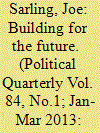

|
|
|
|
|
| Publication |
2013.
|
| Summary/Abstract |
The UK's housing problem has become an economic one. Finding ways to boost the supply of housing across the UK is currently near the top of the Government's economic growth and jobs agenda. As a result of failed policies over the past 60 years - policymakers' unwillingness to tackle NIMBY interests, a complex national planning system, developers' unwillingness and inability to build housing at the volume required to maintain stable prices, changing preferences amongst the population - the scale of the problem is vast. However, for any hope of success for the Government's housing strategy, it is vital to understand the extent to which the housing landscape varies significantly across different parts of the country.
|
|
|
|
|
|
|
|
|
|
|
|
|
|
|
|
| 7 |
ID:
087969
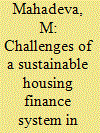

|
|
|
| 8 |
ID:
123069


|
|
|
|
|
| Publication |
2013.
|
| Summary/Abstract |
From the late 1910s onward, co-operative housing societies in cities like Bombay offered affordable housing by using the agency of community to protect against the vicissitudes of the market. At the same time, ideas of urban citizenship premised on the liberal individual received greater attention with a broadened franchise and became increasingly linked to social rights such as affordable housing. While the community and the individual are seen as opposed to one another in the discourse of citizenship, this paper suggests that they mutually informed and constituted one another between 1919 and 1980 in ways that have enduring significance for understandings of urban citizenship.
|
|
|
|
|
|
|
|
|
|
|
|
|
|
|
|
| 9 |
ID:
101401
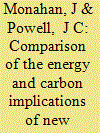

|
|
|
|
|
| Publication |
2011.
|
| Summary/Abstract |
The built environment needs to develop sustainable, decarbonised, low energy systems and approaches that are socially acceptable and economically beneficial. The UK mainstream house construction industry is being driven, through policy and regulation, towards achieving this end without evidence of how these new systems of provision are used by passively adopting households. In this paper energy use, consequential emissions of CO2, and annual running costs for a case study comprising 14 newly constructed low energy affordable homes are evaluated. Four different energy typologies are compared: ground sourced heat pumps; active solar (thermal and photovoltaic); passive solar and mechanical ventilation with heat recovery; conventional high efficiency gas boiler. The carbon embodied in construction and emitted over a 20 year occupation period for each typology is calculated. Ground source heat pumps have the highest annual primary energy demand, CO2 emission and annual running costs over the 20 year period. The homes with active solar technologies provided most benefit across all three evaluation criteria. Energy and CO2 emissions associated with end uses other than heating were similar to the UK average. This poses significant questions on the probability of policy application in the real world to deliver projected reductions in emissions of CO2.
|
|
|
|
|
|
|
|
|
|
|
|
|
|
|
|
| 10 |
ID:
162333
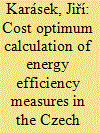

|
|
|
|
|
| Summary/Abstract |
The EU Member States have adopted the Energy Performance of Buildings Directive (EPBD II) in their legislation. This directive introduces new procedures for evaluating the setting of energy performance requirements for buildings, including the so-called cost optimum requirements.
|
|
|
|
|
|
|
|
|
|
|
|
|
|
|
|
| 11 |
ID:
187176
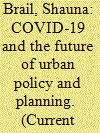

|
|
|
|
|
| Summary/Abstract |
The pandemic has brought major disruptions to cities, particularly in patterns of work and transportation. Predictions of the death of downtowns may have been premature, but urban planners are rethinking the traditional central business district, transit systems, public spaces, and other key features of city life as many office workers remain slow to return to old routines. As they face the prospect of lower tax revenues, governments will have a major role to play in helping cities adapt and stay vibrant.
|
|
|
|
|
|
|
|
|
|
|
|
|
|
|
|
| 12 |
ID:
101452
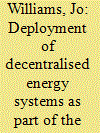

|
|
|
|
|
| Publication |
2010.
|
| Summary/Abstract |
The housing growth programme could offer an opportunity for accelerating the deployment of decentralised renewable energy systems (DRES) in the UK. The Government hopes to leverage private sector investment into DRES as part of new housing projects. The aim of this paper is to assess whether current regulatory and funding frameworks are sufficient to achieve this. The question is explored by drawing on the experience of developers, local authorities, energy utilities and service companies operating in the largest housing growth region in the UK-Thames Gateway. Their experience suggests that the current low intervention approach will be insufficient to generate the shift required in both industries. In order to be more successful economic and regulatory instruments should focus on producers (house-builders and energy providers) rather than consumers (households). Tighter regulation is needed to ensure that producers have a responsibility to install DRES as part of new developments, to enable connection to the grid, to ensure a sustained financial return from investment and revenue is spent on the expansion of new renewable energy infrastructure. This regulatory framework must be under-pinned by substantial funds focused on producers. Greater intervention is needed if DRES is to be included in new housing development.
|
|
|
|
|
|
|
|
|
|
|
|
|
|
|
|
| 13 |
ID:
142674
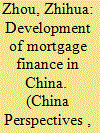

|
|
|
|
|
| Summary/Abstract |
This paper compares the current Chinese mortgage market with the markets in several advanced economies that suffered most in the 2008 Global Financial Crisis, exploring the potential and rigidities of development of the secondary mortgage market in China. It finds that, first of all, while the over-securitisation of mortgages in the United States accounted for most for its housing decline and subsequent economic stress, the housing downturn in China is largely the result of the underdeveloped housing finance sector. Second, in the absence of a well-functioning legal system and mature primary mortgage market, China needs to make more effort to improve the diversity of the primary market before establishing a secondary market. Third, in China’s market transition, the nature of housing should be seen as neither an economic engine, as now in China, nor as a financial derivative, as in the United States.
|
|
|
|
|
|
|
|
|
|
|
|
|
|
|
|
| 14 |
ID:
187834


|
|
|
|
|
| Summary/Abstract |
We study the approximate sources of China's business cycles in an estimated dynamic stochastic general equilibrium (DSGE) model with housing and banking. The model replicates well the volatility and cyclicality of key macroeconomic variables observed in the past two decades in China. A host of shock decomposition exercises demonstrate that, among the shocks being considered, both financial and housing shocks are driving China's business cycles, accounting for a particularly large fraction of the variance in most macroeconomic and financial variables at the business cycle frequencies. In particular, the capital quality, housing demand, and loan-to-value shocks display prominent contributions to the business cycle fluctuations. Moreover, there exists substantial interactions between the banking and housing sectors in China, where the collateral constraint and the financial constraint amplify with each other. The results shed new light in the understanding of China's business cycles, and may serve as a useful benchmark for future quantitative analyses of China's macroeconomic fluctuations using DSGE frameworks.
|
|
|
|
|
|
|
|
|
|
|
|
|
|
|
|
| 15 |
ID:
124370


|
|
|
|
|
| Publication |
2013.
|
| Summary/Abstract |
The UK Government has unveiled an ambitious retrofit programme that seeks significant improvement to the energy efficiency of the housing stock. High quality data on the energy efficiency of buildings and their related energy demand is critical to supporting and targeting investment in energy efficiency. Using existing home improvement programmes over the past 15 years, the UK Government has brought together data on energy efficiency retrofits in approximately 13 million homes into the Homes Energy Efficiency Database (HEED), along with annual metered gas and electricity use for the period of 2004-2007.
This paper describes the HEED sample and assesses its representativeness in terms of dwelling characteristics, the energy demand of different energy performance levels using linked gas and electricity meter data, along with an analysis of the impact retrofit measures has on energy demand. Energy savings are shown to be associated with the installation of loft and cavity insulation, and glazing and boiler replacement. The analysis illustrates this source of 'in-action' data can be used to provide empirical estimates of impacts of energy efficiency retrofit on energy demand and provides a source of empirical data from which to support the development of national housing energy efficiency retrofit policies.
|
|
|
|
|
|
|
|
|
|
|
|
|
|
|
|
| 16 |
ID:
168322


|
|
|
|
|
| Summary/Abstract |
Energy poverty is defined as the inability to afford to heat the home to an adequate temperature at reasonable cost. Such a concept has gained political recognition in an increasing number of countries; however, in the United Kingdom, related policies tend to rely upon measures of general deprivation as a practical proxy. This has often resulted in the design of sub-optimal schemes for eradicating this issue.
|
|
|
|
|
|
|
|
|
|
|
|
|
|
|
|
| 17 |
ID:
144351


|
|
|
|
|
| Summary/Abstract |
This article is intended to contribute broadly to research in post-socialist urban studies. Based on ethnographic fieldwork and interviews with ‘newcomers’ to the capital, Astana, from different parts of Kazakhstan, I examine the renting practices of newcomers. I analyse the experiences of newcomers in their new urban milieu of Astana, and try to answer the question of what it means to live in the city for various groups of individuals on a daily basis. I examine the Soviet and post-Soviet housing and the continuities of the Soviet legacy when it comes to the institution of propiska (city registration). I show that living in shared flats is a coping strategy to deal with expensive rents and meant to be a transitory step towards homeownership. For this reason many accept high rents and crowded housing as ‘normal’. Furthermore, I argue that informal renting practices are acceptable mostly for young and single people, who are free to experiment with city life, and are on their way to establishing careers and personal lives. However, elderly newcomers and young families with children who do not wish to live in shared flats, but have to rent, feel ‘homeless’ and trapped in ‘liminal housing’. For them, renting is undesirable, and they feel a sense of incarceration if they fail to secure housing.
|
|
|
|
|
|
|
|
|
|
|
|
|
|
|
|
| 18 |
ID:
159076


|
|
|
|
|
| Summary/Abstract |
This paper studies how individuals, particularly low-income individuals, have financed housing purchases since the housing market was privatized in urban China in the 1990s. To the surprise of many policy makers and economists, more than 80% of the households in urban China owned private housing by the end of 2010. In contrast to most developed countries, we find that male siblings are important borrowing resources to purchase housing. Conditional on the number of siblings, having more brothers instead of sisters increases the probability of owning housing among male individuals born during the baby boom (1949–1978) in urban China. However, there is no such brother effect for females. The brother effect is stronger for males with low income or low levels of education and is also stronger when brothers are wealthier. Our results are robust to different model specifications. Our results suggest that females are likely to be excluded from family-based informal financial market for housing purchase among baby boom generations in China.
|
|
|
|
|
|
|
|
|
|
|
|
|
|
|
|
| 19 |
ID:
168649


|
|
|
|
|
| Summary/Abstract |
Globally, building energy regulation has been an effective policy instrument for reducing energy use and carbon emissions. In Australia, the majority of regions address building performance through the National Construction Code. However, in 2004 the New South Wales government introduced a planning instrument called the ‘Building Sustainability Index’, known as BASIX. Until now there has been limited investigation of this sustainability index approach compared with addressing issues individually through building standards. This paper presents analysis of 94,648 building energy assessments in New South Wales and 190,286 from other Australian states to explore the impact of BASIX. The results show that the building code process delivers greater certainty and higher performance than through the sustainability index. The analysis shows that 58% of homes that pass BASIX would fail the National Construction Code for thermal comfort, and that the process of improving performance through the index is more cumbersome and slower than through individual building standards. Given the need to progressively increase house energy standards, governments should be seeking both certainty and higher performance outcomes. Failure to deliver community expected minimum performance risks locking in poor performance for long-life assets, and condemning a generation of households to unnecessarily higher energy bills.
|
|
|
|
|
|
|
|
|
|
|
|
|
|
|
|
| 20 |
ID:
120936


|
|
|
|
|
| Publication |
2013.
|
| Summary/Abstract |
By now, ensuring Good Urban Governance (GUG) has been one of the major challenges for urban government in the developing countries. Though the main objective of GUG is to ensure equal facilities to urban people, in most cases, it is not materialised. One of the reasons is lack of proper urban planning and management, which by and large, results in unplanned growth of slums and illegal settlement. Due to rapid migration of people from rural to urban areas, urban governments are facing numerous challenges to meet the basic needs of urban people. The rapid inflow of additional people creates extra pressure on water, housing, electricity, gas and other means of survival. This has also instigated various social, political, institutional, economic and structural forms of violence in the cities. At present, urban governments of many developing countries have failed to tackle various forms of crimes and delinquencies. This raises the important query as to how GUG is interlinked with urban security issues? It is in this context that the major objectives of the paper are to perceive the overall phenomenon and outline the various dimensions of urban insecurity issues in relations with the GUG. Based on the evidences of violent activities in different cities, some key challenges of urban government have been discussed. Deriving the causes and consequences of urban violence, some recommendations have been put forward from developing country context.
|
|
|
|
|
|
|
|
|
|
|
|
|
|
|
|
|
|
|
|
|